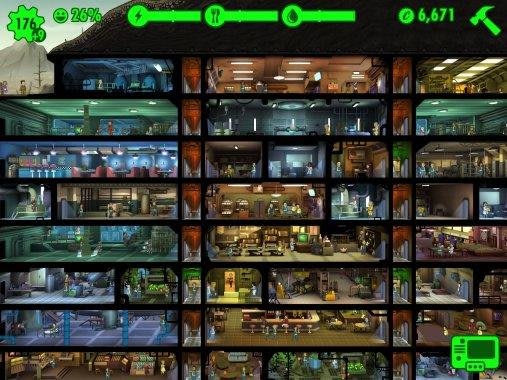Xer0botXer0
Senpai
Hi guys,
Update:
How's this ? it feels better.
So in Fallout Shelter you can see that the rooms are divided by black lines, but it's also 3D so that's a lil different.
 I'm looking for something similar within a building.
I'm looking for something similar within a building.
I suppose I need to actually create the structure of the building..
In This war of mine they do a similar thing, black lines but it's also 3D..
 I just made the tiles for the kitchen within the building, this is the background (background first) then I'll create furniture and such afterwards..
I just made the tiles for the kitchen within the building, this is the background (background first) then I'll create furniture and such afterwards..
 I mean there has to be doors between the rooms, so if I do add dividers than it'll be on a second layer. Considering it's 2d I doubt a person would see the door ? Perhaps I could also just go with the thick black lines and then add a kind of L shape from the viewers perspective on both sides of the black dividers to show that the door is at that location. Unless the dividers is textured or the same as the buildings art.. like brick or so.. I'll give that a go but lemme know if anyone's got input on a nice way to approach this.
I mean there has to be doors between the rooms, so if I do add dividers than it'll be on a second layer. Considering it's 2d I doubt a person would see the door ? Perhaps I could also just go with the thick black lines and then add a kind of L shape from the viewers perspective on both sides of the black dividers to show that the door is at that location. Unless the dividers is textured or the same as the buildings art.. like brick or so.. I'll give that a go but lemme know if anyone's got input on a nice way to approach this.
Also thoughts on the kitchen tiles ? I haven't added much color, it kind of feels clean to me, since I'm working on a game that'll have blood involved I feel like the blood or mess will paint color to the rooms haha.
Update:
How's this ? it feels better.
So in Fallout Shelter you can see that the rooms are divided by black lines, but it's also 3D so that's a lil different.

I suppose I need to actually create the structure of the building..
In This war of mine they do a similar thing, black lines but it's also 3D..

Also thoughts on the kitchen tiles ? I haven't added much color, it kind of feels clean to me, since I'm working on a game that'll have blood involved I feel like the blood or mess will paint color to the rooms haha.
Last edited:












